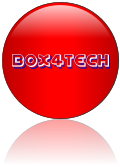If you’re thinking of buying either the Canon EOS 7D or Nikon D700 digital SLR camera, then you need to read this. In this article we will run through the major features of these two great cameras and see which is best. We will then finish with a conclusion where we take a balanced view of all points considered.
Megapixels?
The Nikon D700's 12.1 megapixels mean that you will be able to print up to about A2 size, unless you do a lot of cropping in which case it will probably be up to A3. The Canon EOS 7D has 18 megapixels, which is a lot more. This is a big difference, especially considering that the D700 is nearly $1,000 more expensive than the 7D. It must be pointed out though that there is more to digital SLR image quality than just the number of megapixels. It's also worth pointing out that the D700 has
an FX-format sensor, which is basically a digital replacement for 35mm film.
It's All About Speed
The Nikon D700 and the Canon EOS 7D are both able to shoot at 8 frames per second for up to 100 (D700) or 125(7D) JPEGs at once. In addition to this though, the D700 does boast even more than this in terms of its start-up time and shutter lag. The 0.12 second start-up time and the 0.40 seconds shutter lag will give you near instantaneous performance.
What About Low-Light Shooting?
Probably the main factor when it comes to how well a digital SLR copes with low-light scenes is its ISO range. The ISO range determines how sensitive the image sensor is to light, and the higher it can go the more light will be captured from the scene. Both the EOS 7D and the D700 are set to go up to an ISO of 6,400. However, both cameras are able to have their ISO ranges expanded, the 7D up to 12,800, but the D700 can go all the way up to 25,600! This places the D700 as the clear winner when
it comes to shooting dark scenes.
Computer Control
One great feature that the Nikon D700 has which doesn’t appear to be on the Canon EOS 7D, is the ability to control the camera from a computer. This is great if you are shooting wild animals and don’t want to disturb them. Set up your camera, then hide some distance away with your laptop and wait for the perfect moment.
Compose Using the 3-inch Screen
The Nikon D700 also enables you to use the 3-inch screen to frame up your photos. Also, this screen is viewable from as much as 170 degrees. This is very handy if you find yourself having to shoot from an awkward place with the camera pointing at an extreme angle.
Summary
Okay, so let’s sum up the major features we have talked about, and see which digital SLR wins for each one:
Megapixels: EOS 7D
Speed: D700
Low-Light Shooting: D700
Remote Control: D700
Live View Screen: D700
Price: EOS 7D (almost $1,000 cheaper)
So, if megapixels and price are your main factors, then the Canon EOS 7D is the better choice. However, if you can cope with only using 12.1 megapixels (which, by the way, is still plenty for the majority of photographers), and don’t mind paying the higher price, the Nikon D700 will give you a very fast start-up time, superb low-light shooting ability, the ability to be controlled from your computer, and the use of a Live View 3-inch screen.
Still not sure which SLR camera is best? Visit the Canon EOS 7D Review and Nikon D700 Review for further information.




No comments:
Post a Comment